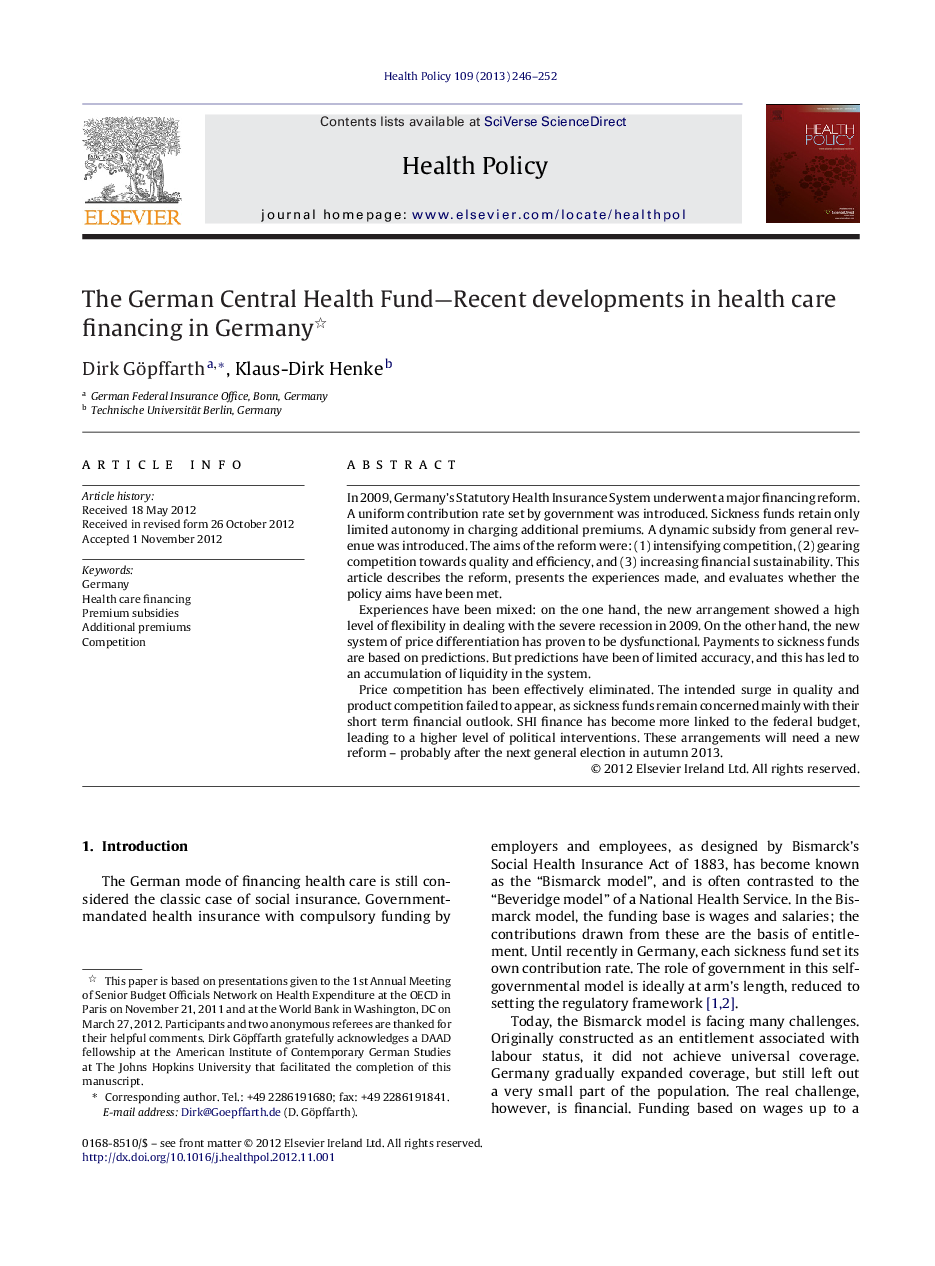| Article ID | Journal | Published Year | Pages | File Type |
|---|---|---|---|---|
| 4197928 | Health Policy | 2013 | 7 Pages |
In 2009, Germany's Statutory Health Insurance System underwent a major financing reform. A uniform contribution rate set by government was introduced. Sickness funds retain only limited autonomy in charging additional premiums. A dynamic subsidy from general revenue was introduced. The aims of the reform were: (1) intensifying competition, (2) gearing competition towards quality and efficiency, and (3) increasing financial sustainability. This article describes the reform, presents the experiences made, and evaluates whether the policy aims have been met.Experiences have been mixed: on the one hand, the new arrangement showed a high level of flexibility in dealing with the severe recession in 2009. On the other hand, the new system of price differentiation has proven to be dysfunctional. Payments to sickness funds are based on predictions. But predictions have been of limited accuracy, and this has led to an accumulation of liquidity in the system.Price competition has been effectively eliminated. The intended surge in quality and product competition failed to appear, as sickness funds remain concerned mainly with their short term financial outlook. SHI finance has become more linked to the federal budget, leading to a higher level of political interventions. These arrangements will need a new reform – probably after the next general election in autumn 2013.
